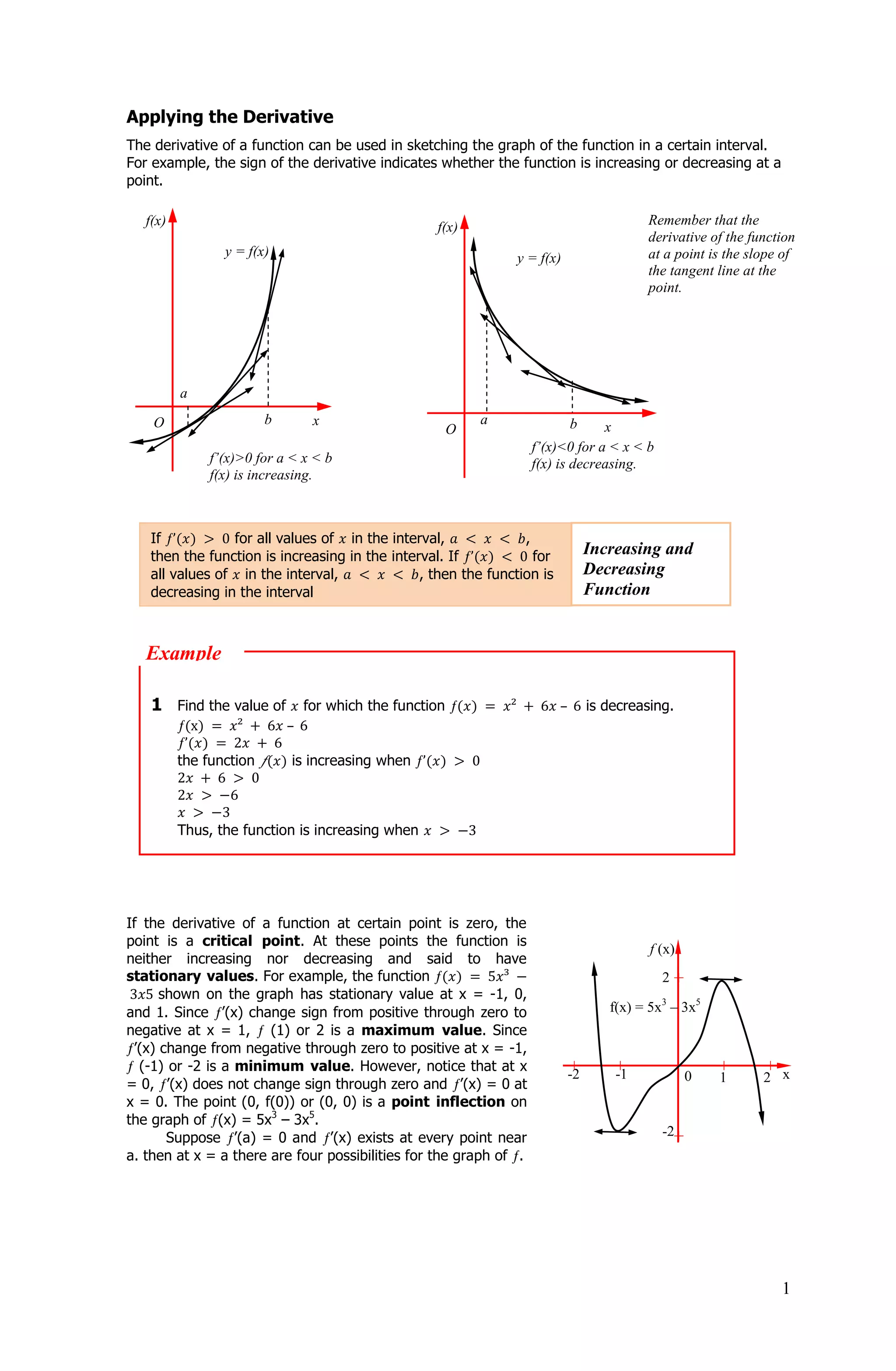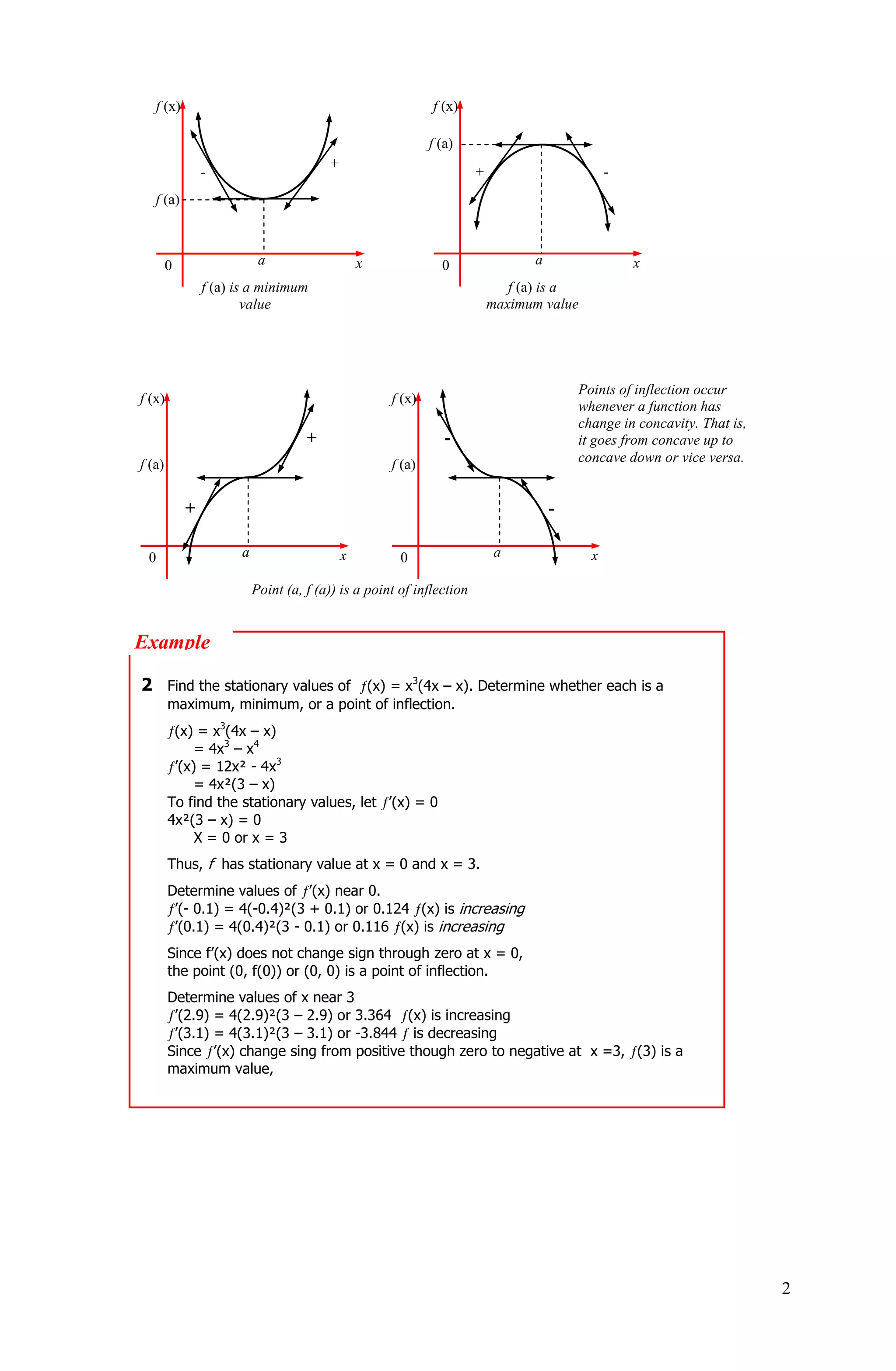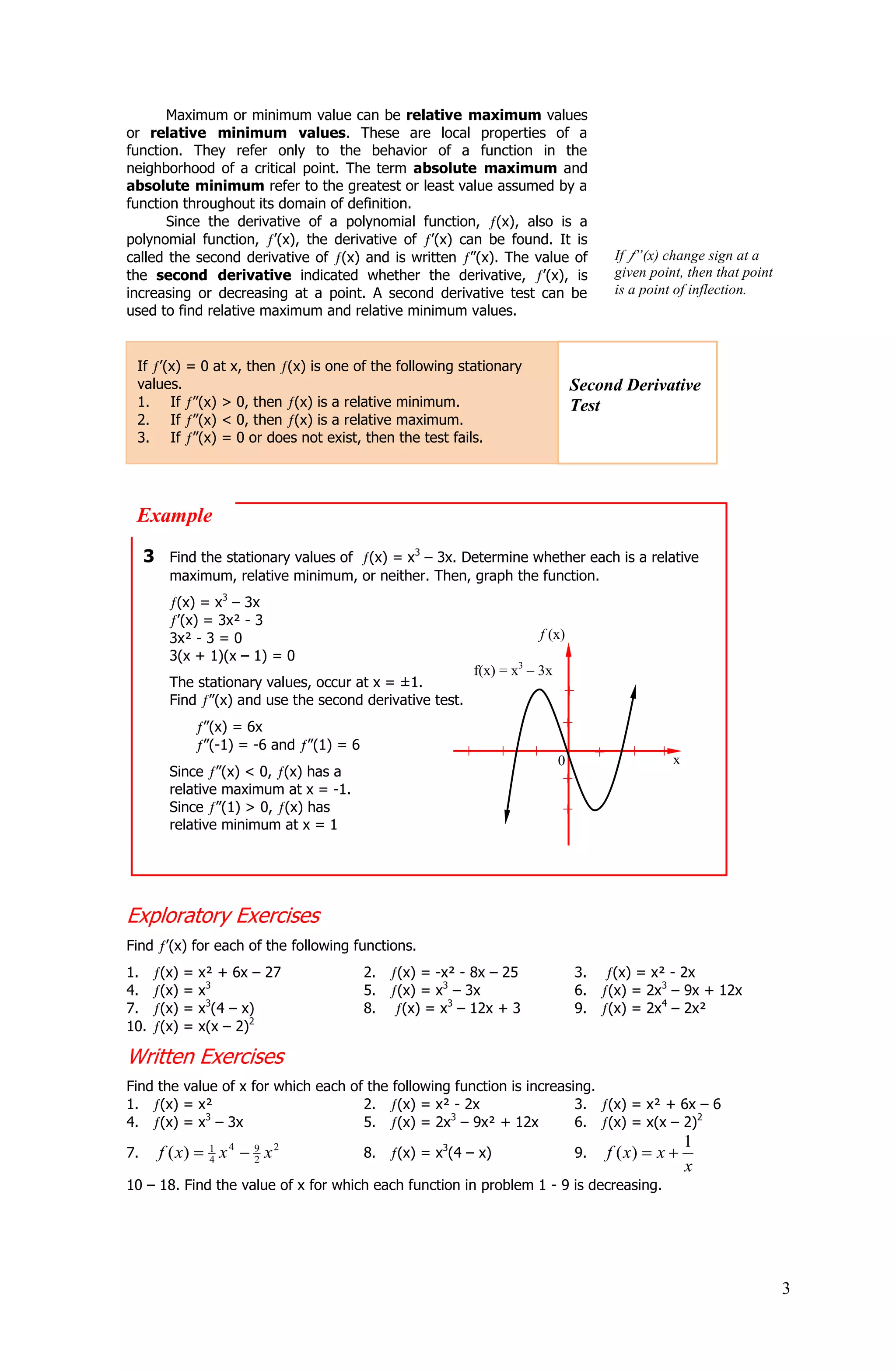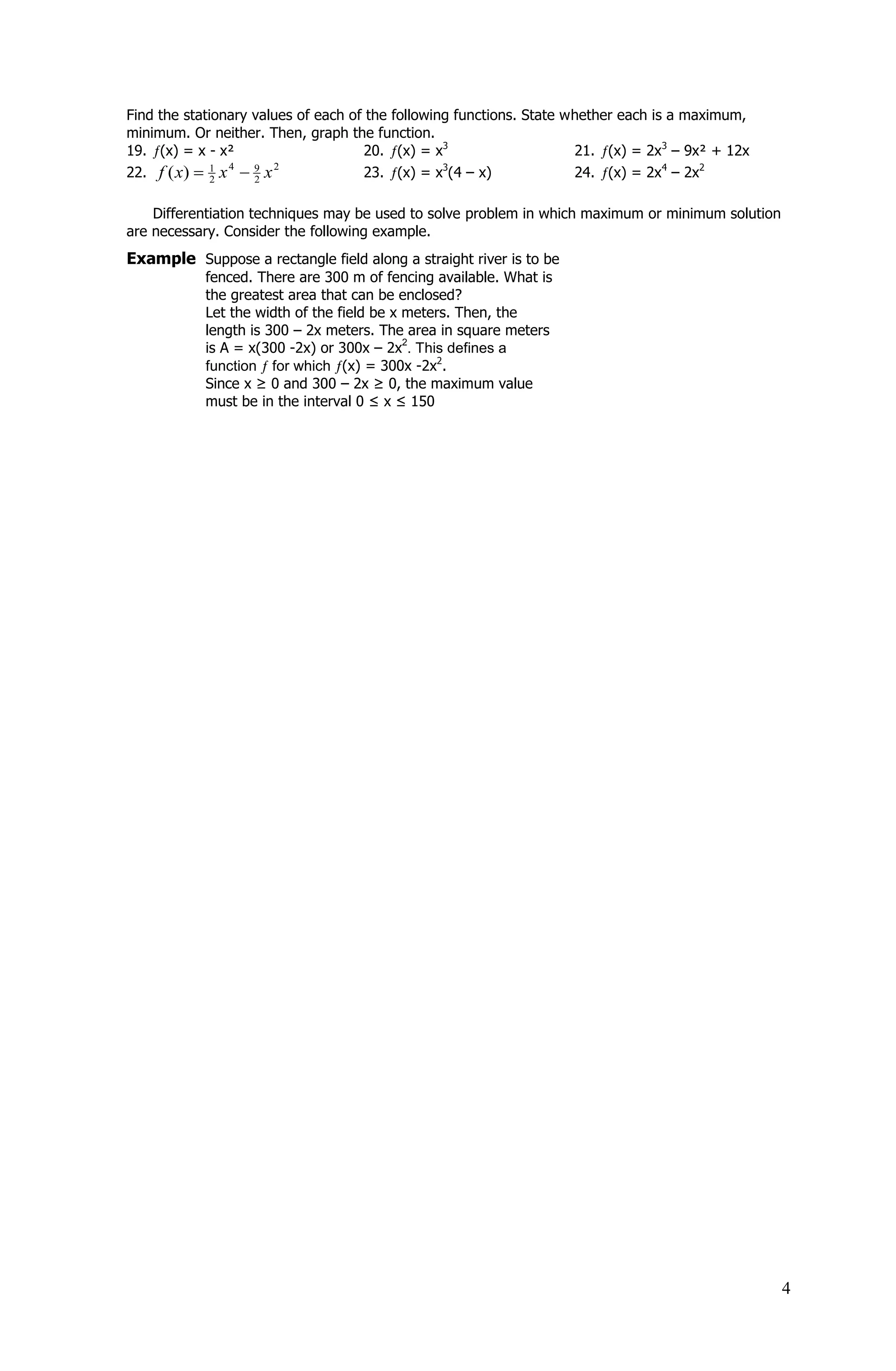The document discusses using the derivative to determine whether a function is increasing or decreasing over an interval. It provides examples of using the sign of the derivative to determine if a function is increasing or decreasing. It also discusses using the second derivative test to determine if a stationary point is a relative maximum or minimum. Specifically:
- The sign of the derivative indicates whether the function is increasing or decreasing over an interval. Positive derivative means increasing, negative means decreasing.
- Stationary points where the derivative is zero require the second derivative test to determine if it is a relative maximum or minimum. Positive second derivative means a relative minimum, negative means a maximum.
- Examples demonstrate finding stationary points, using the first and second derivative



